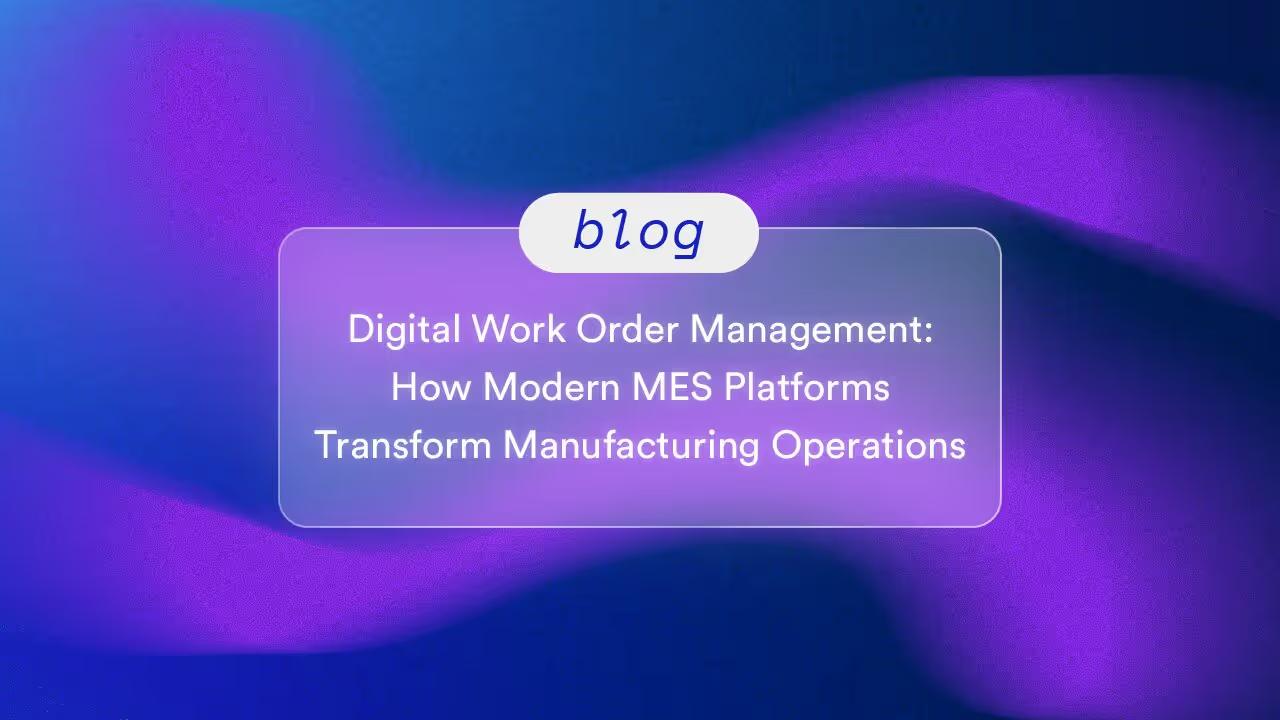The past year brought significant progress to the manufacturing industry. Advancements in analytics, industrial Internet of Things (IIoT) devices, computing power, and more all helped manufacturers get a handle on their operational hurdles. Still, it’s no secret that 2023 came with some challenges as well. It was a difficult year for manufacturers across categories, with ongoing supply chain issues, shallow labor pools, rising costs, and other social and economic factors throwing numerous roadblocks in organizations’ paths.
All of this is to say that leaders are looking to 2024 with a mixture of hope and hesitancy, unsure if the turning of the calendar will also turn the tides on some of the challenges that have impacted the sector most profoundly. With this in mind, let’s walk through the issues that are likely to be top of mind for manufacturers in 2024 — and the technologies that will define the coming months.
Supply Chain Resilience
Over the past few years, a steady stream of material shortages and shipping disruptions served as a constant reminder of the volatility of our global supply chain. Despite the significant investments manufacturers have made to firm up global supply chains over the past few years, there is still more work to be done, as more than half (53%) of respondents to our recent State of Manufacturing Survey shared that their organizations remain hardly or somewhat prepared for supply chain challenges.
While the industry certainly made progress toward a more stable, reliable, and resilient supply chain in 2023, continuing the journey will remain a top priority in the coming year. The next step for many manufacturers will be implementing traceability solutions that enable enhanced, two-way visibility into operations. Not only do these solutions help manufacturers improve inventory accuracy, but traceability solutions like those offered by TrakSYS™ also provide insight into the genealogy of raw materials which improves compliance, minimizes the impact, occurrence, and time needed to resolve recalls, and improves quality.

Sustainability
Making manufacturing operations more sustainable was a priority for many companies in 2023. This focus on cutting waste is likely to continue in the coming year as regulatory benchmarks and public opinion continue to favor sustainable practices. Not only do sustainable practices help manufacturers reduce waste — and the costs associated with it — from their operations, but they can also help improve brand reputations and position manufacturers ahead of the curve of looming environmental regulations.
In 2024, the popularity of circular manufacturing — a close cousin of the lean and “reduce, reuse, recycle” models that found footing over the past year — is likely to grow. Circular manufacturing is one of life’s rare “win-wins,” allowing manufacturers to use excess materials in new ways to soften supply chain challenges and support environmental, social, and governance initiatives.
However, this seemingly simple concept is difficult to execute as effectively reusing, recycling, or recirculating manufacturing byproducts requires significant planning and process adjustments. To embrace circular models in 2024, manufacturers will need to firm up their digital ecosystems, helping them identify usable byproducts and track them throughout the manufacturing process.
Reducing energy consumption may also be at the top of manufacturers’ sustainability priority lists in 2024, as it lowers production operating costs and helps businesses adhere to regulatory compliance guidelines. While relying on renewable energy sources is, and always will be, the goal, the unfortunate truth of the matter is planning for and implementing transitions to renewable energy sources is time-consuming and resource-intensive. As such, moving the needle on energy consumption in 2024 will likely rely on a more incremental and pragmatic approach.
It will all start on the shop floor with the answer to a specific question: when, where, and which resources are consumed? Having a clear picture of consumption allows managers to identify opportunities to adjust schedules and energy mixes to cut consumption. Manufacturing execution systems (MES) can help in this pursuit, allowing manufacturers to attain a real-time view of use across the enterprise. To learn more about how MOM systems — like TrakSYS — can help manufacturers control their carbon footprints and energy bills, check out this infographic.
Labor Troubles
The pandemic may have cut about 1.4 million manufacturing jobs from the U.S. industry, but the sector’s labor challenges go far beyond COVID-19’s effects. American manufacturers were facing a labor crisis far before the pandemic — and the threat is unlikely to abate in the coming year. A joint report from the Manufacturing Institute (MI) and Deloitte projects that, by 2030, the industry will have 2.1 million unfulfilled jobs, unless something changes in the market. The cost of the lost productivity, the report shares, could reach $1 trillion.
This gap in talent has been driven by three primary factors:
- An aging workforce: The current people working in the manufacturing sector are getting older, and there aren’t as many younger professionals entering to fill their roles. As more Baby Boomers retire, there will be even fewer candidates with the experience and know-how to jump into open positions.
- A negative perception of manufacturing roles: There was a time when manufacturing jobs were some of the most sought-after careers in America. However, times changed, and the perception of what it means to work in manufacturing changed with it. A recent study found that 20% of Gen-Zers believe industrial work pays poorly and 25% think it’s unsafe.
- The need for specialized training: Contrary to popular belief, there are some incredibly difficult tasks that need to be completed during production processes. Fewer people are pursuing training to qualify for these roles, which means filling highly specialized positions will be even more difficult in the coming years.
To counter these trends, manufacturers will need to work together to raise awareness about the benefits of a career in the industry and find opportunities to offer on-the-job training. However, these initiatives will take time. Overcoming labor challenges in 2024 will be as much about optimization and automation as it is about hiring, retention, and training.

Mature Digital Manufacturing
Of course, no conversation about the future of manufacturing would be complete without touching on the promising advancements in tech that will define the year ahead. Those who have yet to invest time and resources into the digital transformation of their production processes will have to accelerate their implementations even further if they are to keep pace with their peers. Leaders in this category should focus on:
AI and ML
Artificial intelligence (AI) and machine learning (ML) solutions came into their own in 2023, and there’s more in store in the coming year. Our North American State of the Manufacturing Survey found that 52% of manufacturing leaders said it's very or extremely important to them that their enterprise solutions have AI/ML capabilities. Similar sentiments were echoed in the European Survey. As these systems improve and workers become more comfortable using them, productivity and accuracy in industrial environments will continue to rise.
IIoT
AI and ML platforms need data to work, and advancements in IIoT devices are what supply it. In legacy industrial environments — where equipment often lacks native connectivity capabilities — advancing IIoT technology will be critical to data-led operations. For companies just getting started, investing in and implementing these devices will be step one in 2024.
Industrial Metaverse
Manufacturers are already experimenting with virtual and augmented reality applications in their facilities. In the future, this tech will enable more immersive training experiences, enable virtual prototyping, and even simulate production processes. Metaverse environments will enable manufacturers to garner a deeper understanding of how various software solutions operate and effect positive change across their organizations.
Though strategizing and implementing the rollout of artificial intelligence and machine learning technologies takes time and resources, the benefits in the coming months will be well worth the effort.
Manufacturers who continue to focus on their digital transformation processes in 2024 can expect to not only streamline production processes and improve product quality in the short term but increase overall system value over time. The return on connected manufacturing only grows as more data reveals more opportunities for improvement. Efficiencies, cost savings, and quality improvements build upon one another, compounding returns and encouraging continual improvement.
To learn more about where the industry’s headed in the new year, download Parsec’s North American and European State of Manufacturing Surveys.
FAQs
Related Blog Posts


Let’s Build Your Plan
We’ll help you create the right configuration—today and for the future.












